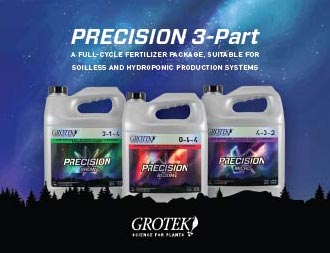Growing Strawberries by Hydroponics
Summary of a talk given by Rocky Caltieri, of Wandin, Victoria to the Hydroponic Society of Victoria in June 1987
Rocky, a commercial strawberry grower, started experimenting with hydroponicsin the open in 1978. He set up an N.F.T. (nutrient film technique) systemusing 90mm PVC pipes as channels. With this system he achieved a muchhigher plant density compared to normal field growing. Although the plantslooked good in the channeling system, each plant on average produced onepunnet of fruit compared to up to ten punnets per plant from field grownstrawberries. As a result, in 1975 he changed to a system of produce boxesand scoria on waist high benches. Each box contained 4 plants yielding4-5 punnets per plant. This method indicated that hydroponics was commerciallyviable. However, the main drawback of this system was the weight of thescoria filled boxes. So in the early 1980's Rocky began trials with horticulturalrockwool. He replaced the scoria with rockwool slabs and the plants continuedto yield well. The next problem was the cost of the rockwool slabs, at4 times the equivalent quantity of scoria, it appeared financially inefficient.
Then there was the problem of disposing of the waste rockwool. In recentyears, Rocky has changed to growing in wrapped rockwool cubes (75x75x65mm high) and replaced the boxes with specially constructed channels againat waist height. Plants are spaced at 125 mm (5") intervals in singlerows. In all of his systems he has recycled his nutrient solution. Insummer, the solution is recirculated continuously, but in winter it isdown to running for 1 hour per day. The nutrient solution is replacedcompletely every two months. The electrical conductivity (EC) is maintainedbetween 2 and 3 ms, and the pH adjusted to between 6 and 6.5. When thepH was allowed to rise to 8, Rocky found the fruit to be noticeably drier.Rocky stressed a number of important points about strawberry growing:
1. There are two main times to plant strawberries in southern Victoria:Winter-June-July (fresh runners), and Summer-January (frozen runners).This late planting enables the plants to develop good crowns and thereforeresults in good cropping potential for the following spring.
2. What varieties to grow in hydroponics? Tioga and Shasta are verylarge plants and sometimes the fruit quality can be affected. Rocky favorsRed Gauntlet, these in his experience produce the best quality fruit.
3. Why not in a greenhouse? The strawberry is a temperate climate plant,and requires cool winters end warm summers for good fruit production.Therefore it is best grown in the open. In greenhouses, it is possibleto grow fruit all year round, however the fruit in winter is tasteless,flowery and unevenly ripe. These days strawberries are grown in the northernstates and shipped to Victoria to fill the demand of the winter marketanyway.
4. Yields in hydroponics: Current strawberry yields per plant are slightlylower than those grown in scoria or soil. However quality is very goodand wastage is only about 1% compared with up to 20% for soil grown plants.Also picking is less fatiguing.
5. Flavor of strawberries: There is no consistent difference betweenhydroponic and soil-grown berries. With those grown in hydroponics, fruitacidity appears to vary with the time of day; those picked in the morningtend to be sweeter.
6. Source of strawberry runners: Always use runners that are certifiedvirus tested. These are available from Toolangi Certified Runner Growers'Cooperative.
7. Spraying of plants for diseases and insect pests: As for soil growncrops, except not as heavy a dose is necessary. Red Spider mite is notas severe a problem in hydroponics.
Courtesy of the Hydroponic Society of America. Used by permission.










